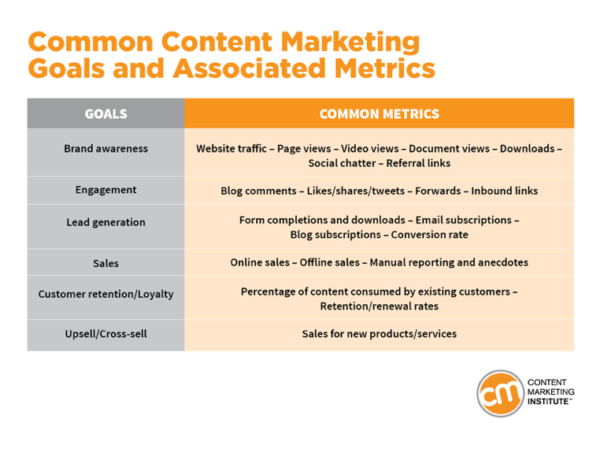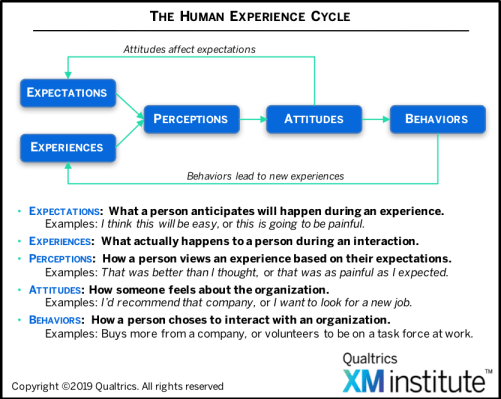Filters
Content Type
Topic
How to Track Your Content Experience Success: 5 Metrics You Should Be Using
Content marketing is an essential part of marketing your business on the web, but just because you’re producing content doesn’t mean that your content is successful. With millions of pieces of content published every month, it’s hard to know which ones are actually getting results. With the growing emphasis being placed on content experience and the user experience, it’s even more critical to track your content experience success to see where you’re making progress and where you can improve.
Whether you’re still venturing into the concept of content experience, or you simply aren’t quite sure how to begin measuring/tracking the success of your content experience strategy, there are several metrics you can use to evaluate the effectiveness of your content.

What You Need to Measure Content Experience: Experience Data
Content experience is a critical component of content strategy. Not only does it influence how someone feels about your brand, but it also predicts success in your marketing efforts. However, to get an accurate experience score, you need to measure the success of your content experience strategy.
There are dozens of different metrics that your marketing team can and should be tracking to determine what’s working and what isn’t. The key is to identify the metrics that align with your strategy’s goals.

Source: Content Marketing Institute
The problem that many marketing teams are finding themselves in is determining what metrics would be most valuable to measure the success of their content experience strategy. How do you measure the experience someone is having when they interact with your content? Aside from taking the time to survey your audience, the best way to measure the experience your content is providing is to use experience data.
Is There Such a Thing as Experience Data?
Experience data is a qualitative and quantitative measurement of the experience someone has when they interact with your content. Instead of trying to track the number of times someone interacted with a piece of content on your site, experience data focuses on a person’s overall experience with your content.
For example, suppose someone lands on page three of your content marketing series but doesn’t read past the introduction. In that case, that interaction is recorded as a “page view,” but your goal with this content experience was to drive people to the “knowledge base” section, so your experience data is not as successful as you had hoped.
On the other hand, if someone reads all five articles in your content marketing series and leaves with new actionable advice, then your content experience was a success.
Experience data differs from traditional metrics, like page views and other analytics. Experience data allows you to track the overall experience someone has with your content regardless of whether they took a specific action.
The human experience cycle is complex, and the same content can provide a different experience to someone depending on the steps they take along the way.

Source: Qualtrics
What’s important to remember about experience data is that it will look different for every brand based on its unique audience, goals, and marketing strategy.
5 Metrics to Monitor to Ensure Your Content Experience Success
Once you’ve taken the time to outline your content experience goals, you’ll create a framework for the experience data you’re tracking. The first step is to identify the most critical metrics to your content experience strategy.
Not quite sure where to begin? Here are five metrics that can help you better determine the success of your content experience:
Bounce Rate
The bounce rate is the percentage of visitors who visit a single page on your website and leave without visiting any other pages. When it comes to determining the success of your content experience, the bounce rate can be a valuable metric to track.
It’s essential to remember that a high bounce rate doesn’t necessarily indicate that you have a failing content experience. A visitor might have only been on your site to find a piece of relevant information, or they might have been on your site to do one specific thing and then left, which is why it’s essential to compare this average to other key metrics, such as time spent on a given page.
If they bounce after a few seconds, they don’t get the expected experience. However, if they bounced after spending 5 minutes on your page, then that means they found something of value that kept them on the page.
Clicks/Pageviews
Another essential metric to consider when evaluating the success of your content experience is the number of times a visitor clicks on a specific piece of content on your site. The more times a visitor interacts with a particular piece of content on your site, the more value they found and the more likely they are to take action, like signing up for your email list or making a purchase.
SEO Page Ranking
When it comes to content experience success, monitoring your page ranking on Google is an important metric to consider. The SEO page ranking is a function of various factors, including the number of times a specific keyword is shown on your page, the number of unique visitors that land on your page from a search engine, and the amount of time spent on your page. The higher your SEO page ranking, the more likely your content experience provides a positive experience for your audience.
Social Shares
Another essential metric to consider when evaluating the success of your content experience is the number of times a specific piece of content has been shared on social media. The more times a piece of content has been shared on social media, the more exposure it has received and the more likely it is that your content experience has been providing a positive experience for your audience.
It’s important to note that not all shares are created equal. Some might be spam, while others might be genuine, which is why it’s essential to track shares from a variety of different sources. The more diverse your share sources, the better.
Time on Page/Scroll Depth
Finally, when determining your content experience success, it’s also essential to consider the amount of time a visitor spends on a specific page and the scroll depth.
The longer a visitor spends on a page, the more value they will extract from your content experience. The deeper that a visitor scrolls through your content, the more engaged they are and the more likely they will take action, like making a purchase or signing up for your email list, which is also an important indicator of your content engagement success!
Put Your Data to Work with Hushly
When it comes to your content experience, the most essential thing that you can do is track your data. The data you collect will help determine whether your content experience provides a positive experience for your audience.
From content analytics to account/visitor analytics, Hushly offers a wealth of analytics to help your team better understand your content’s performance and where opportunities for improvement lie.
Ready to see what access to a wealth of data can do for your business? Request your demo today and unlock your true potential!
The post How to Track Your Content Experience Success: 5 Metrics You Should Be Using appeared first on Hushly.



